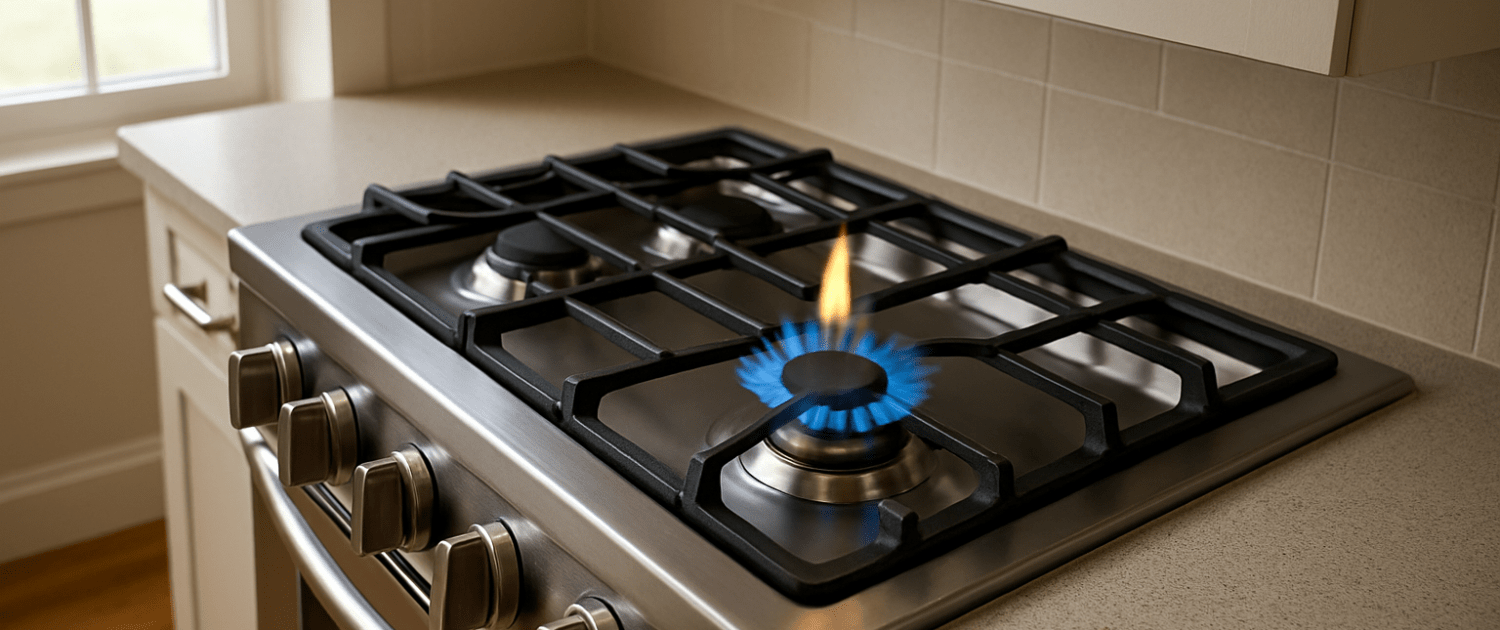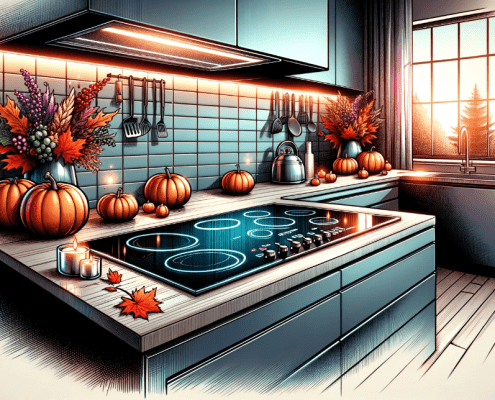Why You Should Never Ignore a Gas Cooktop Yellow Burner Flame
Steven E / Monday July 14, 2025
Noticed your cooktop or stove burners glowing yellow instead of blue? Don’t shrug it off! A yellow burner flame is more than just unsightly; it’s a sign your cooktop isn’t burning fuel properly, and it could even mean a carbon monoxide risk. Here’s why you should never ignore a yellow burner flame and what to do about it.
Why Your Burner Flame Should Be Blue
A properly functioning gas burner produces a clean, stable, blue flame. That blue color tells you that the gas is mixing with the right amount of air and burning efficiently.
Why is a blue flame so important?
- It means complete combustion, which produces maximum heat and minimal carbon monoxide.
- It’s more energy-efficient and saves money on your gas bill.
- It helps protect your cookware from soot and discoloration.
A yellow or orange flame, on the other hand, is a sign that something’s wrong.
What Causes a Yellow Burner Flame?
When your cooktop flame burns yellow, it means the gas is not mixing with enough oxygen before it burns. This is called incomplete combustion. Instead of burning cleanly, the gas produces more soot, carbon monoxide, and less heat.
Several common issues can lead to poor air-to-gas mixture and yellow flames:
- Dirty Burner Heads: Food spills, grease, and dust can clog the small holes in the burner head. This disrupts the even flow of gas and reduces the amount of air mixing in.
- Misaligned Burner Parts: If the burner cap or head isn’t seated properly, it can block airflow and lead to uneven or yellow flames.
- Blocked Air Shutter: The air shutter is a small adjustable opening near the burner base that controls how much air mixes with the gas. If it’s blocked or set too low, the flame turns yellow.
- Faulty or Dirty Orifice: The orifice is the small nozzle where gas exits and enters the burner. If it’s dirty or partially blocked, the gas flow becomes uneven.
- Incorrect Gas Pressure: If your cooktop is set up for natural gas but connected to propane, or if the regulator is malfunctioning, the incorrect pressure can affect flame quality.
Why You Shouldn’t Ignore a Yellow Flame
A yellow flame isn’t just inefficient, it can also be dangerous. Here’s why it’s important to fix the problem right away:
- Increased Carbon Monoxide: Incomplete combustion produces more CO, which is harmful if it builds up in your kitchen.
- Soot Buildup: Yellow flames leave black soot on your cookware and cooktop, which is messy and hard to clean.
- Uneven Cooking: A poor flame produces less consistent heat, making it harder to cook food evenly.
- Wasted Fuel: A yellow flame uses more gas to produce less heat.
Simply put, fixing a yellow flame keeps your kitchen safer, cleaner, and more efficient.
How to Spot the Problem
Besides the obvious yellow or orange color, you might notice a few other symptoms that your cooktop isn’t running properly:
- Burners make a popping or roaring noise.
- Flame appears lazy and weak instead of sharp and strong.
- Black marks on pots and pans.
- Uneven flames around the burner head, with some areas higher or lower than others.
- Lingering gas odor when the burners are on.
These clues point to the same root issue: poor gas and air mixing.
Key Parts to Check and Maintain
The good news is, many of the problems that cause yellow flames are easy to diagnose and fix. Here are the key parts to check when troubleshooting your cooktop.
Burner Heads and Caps
These sit at the top of the cooktop and distribute the flame evenly. Look for:
- Clogged ports where gas comes out.
- Grease or burnt-on food is blocking the holes.
- Misaligned burner caps.
You can clean burner heads with a stiff brush and warm, soapy water. Make sure the caps are seated properly and aligned with the burner base.
Air Shutter
This small part near the base of each burner controls airflow. If it’s blocked by dust or set too low, open it slightly to allow more air in and restore the blue flame.
Orifice
The orifice is a tiny brass nozzle inside the burner base. If it’s partially clogged, clean it gently with a soft brush or a pin. Don’t enlarge the hole, as that will disrupt the gas flow.
Venturi Tube
The venturi tube is the hollow pipe that draws air into the gas stream. Check that it’s not blocked by debris or grease and that it’s properly aligned.
Gas Pressure Regulator
If your cooktop isn’t receiving the right pressure, it can affect combustion. Make sure your appliance is matched to your home’s gas type (natural or propane) and that the regulator is functioning properly.
Preventing Future Issues
Once you’ve restored a steady blue flame, keep it that way with regular care:
- Wipe down burners after every use to prevent grease buildup.
- Check and clean burner ports monthly.
- Inspect air shutters and adjust if needed.
- Test for proper flame color periodically and address issues right away.
Common Questions
Is a little yellow in the flame okay?
Small yellow tips on an otherwise blue flame are usually fine. But if most of the flame is yellow or orange, it needs attention.
Why does my flame roar or hiss loudly?
This usually means too much air is mixing with the gas. Adjust the air shutter slightly to reduce airflow until the flame quiets down and stays blue.
Can dirty burners really cause carbon monoxide?
Yes. Incomplete combustion from blocked burners or poor air mixture increases CO production. That’s why it’s important to fix the problem quickly.
How do I know if my regulator is faulty?
If you’ve cleaned and adjusted everything else, but the flame is still yellow and uneven, the gas pressure may be too low or inconsistent. In that case, replacing the regulator may solve the issue.
Where To Find Us
If you need any replacement parts for your appliances, you can enter your model number at AppliancePartsPros.com to locate and order them quickly. Most orders arrive in just two business days, and we have tons of great information in our repair help section and YouTube videos to help you troubleshoot.
Stay connected with the latest DIY tips, tutorial videos, and repair guides by following us on Facebook, Instagram, and Twitter. We love hearing about your repair stories and successes. If you need more help or want personalized guidance, feel free to reach out. We’re ready to help you take on your next project with confidence!
The information in this article may not apply to your specific appliance model. We recommend consulting your manufacturer’s documentation or contact us with any questions.
With nearly a decade of experience in providing top-notch customer service regarding appliance parts and repair, Steven enjoys sharing practical advice, troubleshooting tips, and interesting information to help readers stay informed.



